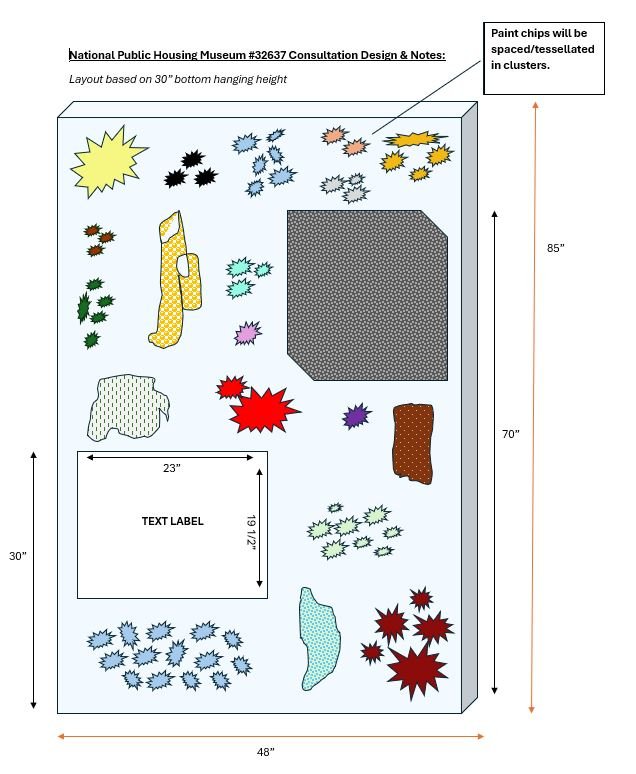Recently, The Conservation Center had the privilege of collaborating on a multi-departmental conservation and display project with the National Public Housing Museum. Below, you can watch the video of the framing process, then scroll down to learn more about the museum's exciting new initiatives and the story behind this piece.
The National Public Housing Museum
The museum’s permanent home is set to open soon in the last remaining building of the 1930s WPA-era Jane Addams Homes on Chicago’s Near West Side. Once open, it will house an oral history archive, public programming, an entrepreneurship hub, and exhibitions showcasing restored apartments that once belonged to families who lived in the Jane Addams Homes, among other offerings.
According to the National Public Housing Museum’s website, more than 10 million people across the United States have called public housing home over the past century. In the late 1990s, as thousands of public housing units were being demolished nationwide, residents began dreaming of creating a museum that would preserve their collective voices, memories, and the histories of public housing. They wanted future generations—children, grandchildren, and the public at large—to better understand their place in the American story and to learn about the public policies that shaped their lives.
In 2007, civic leaders, preservationists, historians, cultural experts, and residents united to incorporate the National Public Housing Museum. Since then, the museum has launched transformative programs that connect the past to contemporary issues of social justice and human rights. When we were contacted to help with the storage, treatment, and display of several preserved fragments of wall coverings from the Jane Addams Homes, we knew we were working on a truly special project.
Collaboration with The Conservation Center
The museum brought us several wallpaper fragments, each adorned with colorful patterns and accompanied by a wide array of paint chips in various hues. Our conservators began by carefully examining the fragments, which showed signs of age, including discoloration, tears, losses, and plaster remnants. As expected with such historic materials, there was also evidence of wear from decades of use. Each piece was treated individually: we cleaned the surfaces using appropriate methods, repaired tears with Japanese tissue and wheat paste, humidified and flattened sections where necessary, and removed layers of old paint from the verso of some pieces.
The fragments prior to treatment:
While the conservation team worked on the wallpaper, Emily Kane, our senior conservation framer and preservation specialist, focused on creating a secure display solution for the fragments, ensuring they would be preserved for future generations. Collaborating closely with the museum, Emily created several mock-ups to showcase the pieces in a way that would allow for the addition of descriptive text in the exhibition.
A mock-up created by our framing team for the museum to review.
Laying out the fragments to visualize the final design.
A close-up of the wall text.
The final design, chosen by the museum, featured the conserved fragments and paint chips individually mounted with Japanese tissue on an archival ragboard-faced hand painted wooden base that contained a custom-made cleating system to support the weight of such a large-scale piece. The completed mount was then encased in a custom vitrine made of Optium Museum Acrylic. This conservation-grade, anti-reflective, anti-static glazing protects against UV rays, ensuring that the pieces remain safe from environmental damage.
The finished vitrine.
The finished vitrine from the side.
Now, these precious fragments are installed in their new home, and we eagerly await the museum’s grand opening later this year. By carefully conserving and displaying these pieces of history—scraps of wallpaper and paint that once adorned the walls of public housing, bringing warmth and comfort to families—the museum offers a powerful reminder of a significant chapter in American life. These fragments, quietly bearing witness to the lives of those who lived in the Jane Addams Homes, now serve as a tangible connection to the past, making it accessible and relevant to future generations.
The vitrine installed (upper right) among other upcoming initiatives, courtesy of the museum website.



















